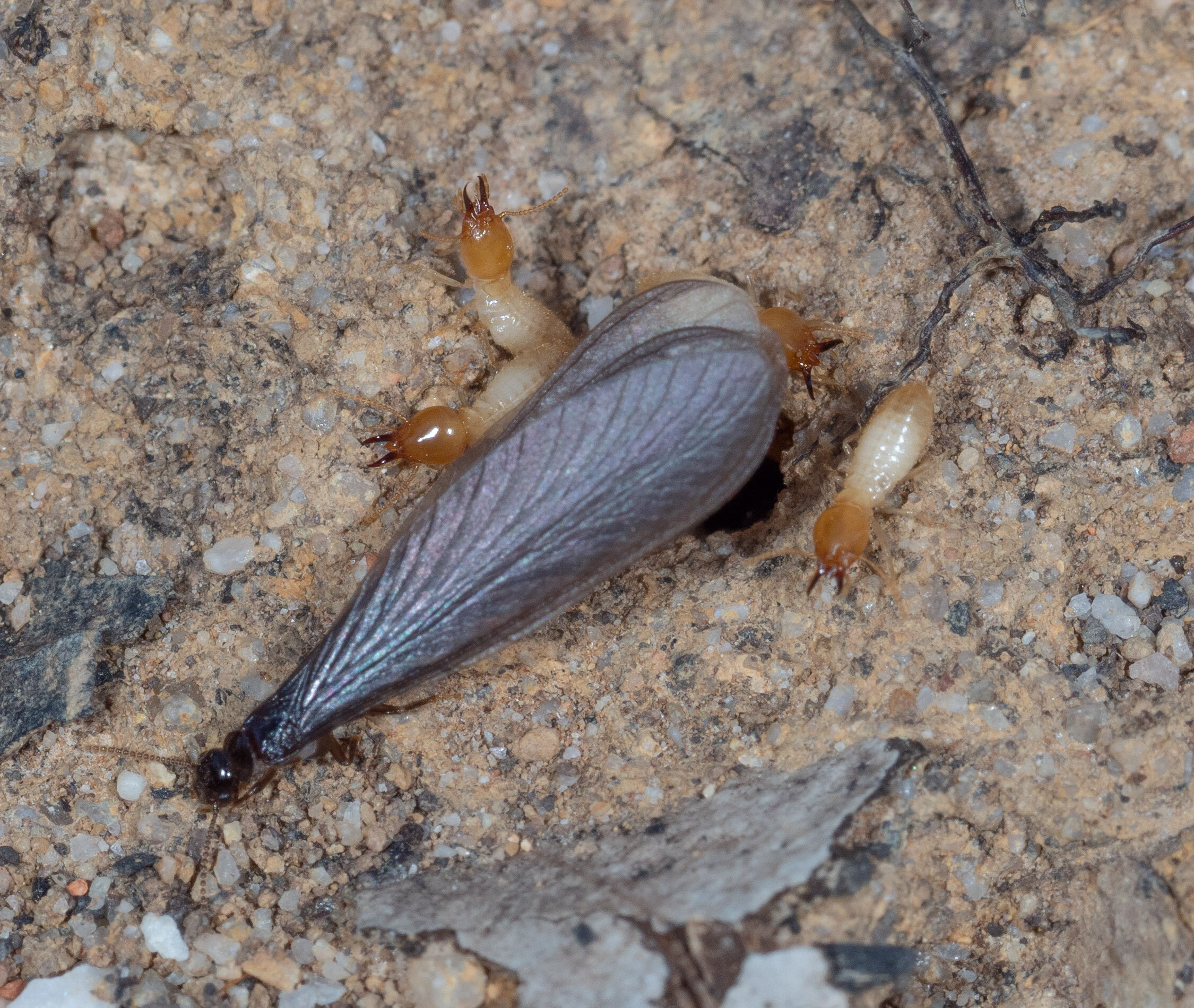Home extensions for a growing family
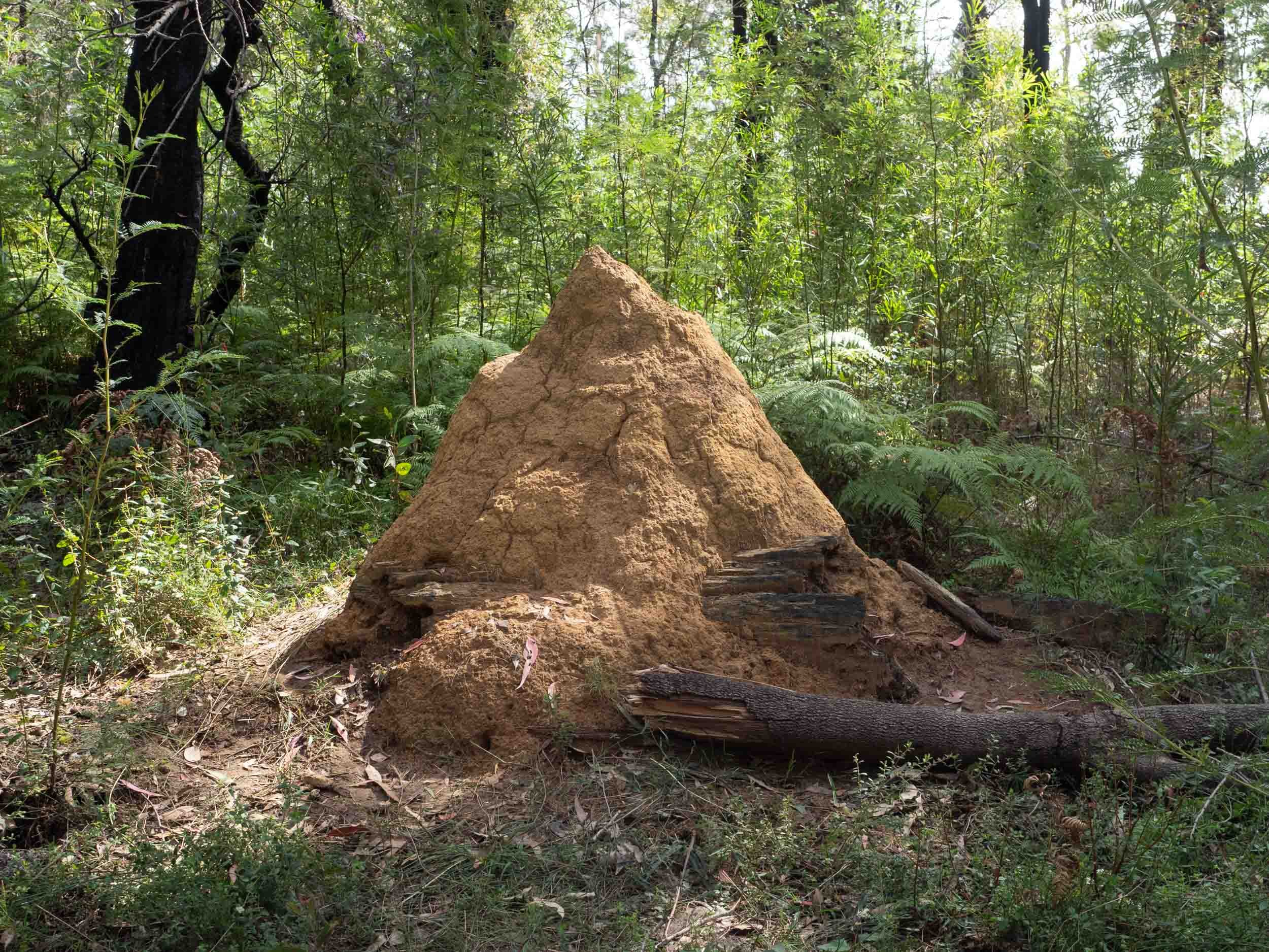
Almost everybody is familiar with termite mounds. These conspicuous structures can be seen in many parts of the country.
They come in diverse shapes and sizes, illustrated by these photos taken in a couple of distant places.
Our changing mound
We have our own termite mound here in the forest. We are sure it’s over 20 years old as it was already well established when we bought our block in 2003 - as shown in a photo taken in December of that year.
It has been built on a large fallen eucalypt trunk, positioned downhill of the mound. The dark brown object on the side of the mound (arrowed) shows that a reno was underway at that time. This is the same dense woody mass used in the construction of the interior of mounds. Worker termites mix soil with their faeces - which are rich in the rigid polysaccharide lignin - to produce this woody material and mould it into an intricate system of galleries (Hill, 1942). Now that’s recycling for you!
A photo taken 7 months later from the opposite side of the mound shows the underlying tree trunk clearly. The addition (arrowed) has been extended to form a spur running from the peak of the mound to its base and has been covered with the same orange-yellow clay/sand mix that caps the whole mound.
When making the capping material, the termite workers select a special type of clay - kaolinite - which has low plasticity and does not incorporate water into its lattice structure. This makes the surface of the mound more resistant to cracking, thereby inhibiting plant growth (Rogers et al, 1999).
By August 2017 the advancing spur has extended over the tree trunk (arrowed). The mound appears to be engulfing the trunk, which is of course exactly what its inhabitants are doing.
Currently (September 2022) that spur has reached the ground and spread sideways along the length of the log (arrowed).
You’ll note that something’s missing - the ends of the tree trunk. Not eaten by the termites, but burnt away in the January 2020 fire which swept through the forest. The heat of the fire probably caused the cracking seen on the surface of the mound.
The opposite (uphill) side of the mound shows vertical streaks, likely the result of heavy rain storms we experienced in 2021 and the early part of this year.
It’s a testament to the quality of the mound construction that it survived these environmental challenges.
September 2022 uphill side of mound
Evidence for an actively breeding colony
There have been significant external changes in the mound over time, which means that termites must be living inside. But are they reproducing - especially in the aftermath of the 2020 fire?
The termites present in an individual mound are almost always the progeny of just one breeding pair - at least for our species (Thompson et al, 2007). The king and queen termite live in a royal chamber in the centre of the mound.
They produce three types of offspring - workers, soldiers and reproductives. Each of these castes carries out particular tasks, flagged by their names.
We’ve never seen termites moving over or around the mound, but that’s not surprising. Workers and soldiers seldom venture outside the mound as their thin exoskeleton makes them intolerant of extremes of temperature or humidity.
The one time that termites must move outside - and then in large numbers - is during a dispersal flight. Winged reproductive termites, alates, leave the nest en masse to find a mate and establish a new colony.
A dispersal event caught in progress
In August last year, we were fortunate to directly observe for the first time the departure of alates from a different colony - an event I described in a blog at the time.
On that occasion, the alates emerged not from a mound but from a flat, bare patch of ground in a different part of the forest. This has the same hard clay surface as the mound. A subterranean nest must lie beneath that site.
The alates were shepherded out of the nest by soldier termites, which formed a protective ring around the departure holes, as seen in the photos below and this video.
The alates emerged in quick succession and the whole departure event was over in less than an hour.
They quickly took flight and set off in search of a site to establish a new colony. Unlike workers and soldiers, the body of alates is covered by a thick cuticle, enabling them to survive the rigours of life outside the nest.
A dispersal flight from our mound
We had never seen alate termites emerging from our mound - despite frequent checking when swarms occurred in the forest. The chances of witnessing the actual emergence event are low, given that it occurs on only one or two occasions a year from a given colony and is all over quite quickly.
So there was high excitement when Kerri reported just over a week ago (on the morning of 9th September) that a swarming event was taking place on our mound. I grabbed my camera and hurried over to the site to get some photos of the event.
There were indeed many alate termites on and around the mound. They were clustered around the top of the mound, using it as an elevated launch pad for their flights. A few soldiers were also present.
However, we had missed the emergence event on this occasion.
A search of the surface of the mound revealed just a single partially open hole with the antennae of several worker termites protruding.
They were probably closing up the hole from which alates had recently emerged.
One of these workers shows the distinctive milky secretion of the Coptotermes lacteus species.
Despite missing the actual emergence, we now had direct evidence that our mound is still actively producing new reproductive termites.
Alates aplenty were present on the ground and vegetation around the mound. Many of these had shed their wings (now called dealates) or were in the process of doing so.
Males were pursuing females and couples in a tandem arrangement were seeking sites to establish a new nest. Splits in the bark of an adjacent fallen casuarina log were an attractive option.
Only a tiny fraction of the alates will be successful in establishing a new nest.
Most fall prey to a wide range of predators - like this one trapped in a spider web.
Termites make a very welcome addition to the diet of animals in the forest - particularly at this time of the year when insects are still not very abundant.
Identity of the mound termites
I collected a number of alates and soldiers from the mound during the dispersal event to establish their identity.
Examination under the microscope revealed the diagnostic features of Coptotermes lacteus - the same species as I found in the subterranean nest last year.
The legends with each image are reproduced from the Hill (1942) account of Coptotermes lacteus. They match my photos very closely. My measurements of features in the actual image are indicated by square brackets. They fall neatly within his range.
The trigger for emergence of alates
As was the case for last year’s swarm from the subterranean nest, the emergence of termites from the mound followed a sustained drop in barometric pressure over the preceding 2 days.
red arrow indicates time of alate emergence
We are very pleased to have discovered that our termite mound is in great shape. Its inhabitants survived a bushfire which destroyed many of the living things around and their ongoing activity plays a key role in the ecology of the forest.
References:
Hill, G.F. (1942) Termites (Isoptera) of the Australian Region. CSIRO. Melbourne. link to Trove
Rogers, L.K.R., French, J.R.J. and Elgar, M.A. (1999) Suppression of plant growth on the mounds of the termite Coptotermes lacteus. Insectes. Soc. 46: 366-371.
Thompson, G.J., Lenz, M., Crozier, R.H. and Crespi, B.J. (2007) Molecular-genetic analyses of dispersal and breeding behaviour in the Australian termite Coptotermes lacteus: evidence for non-random mating in a swarm-dispersal mating system. Aust. J. Zool. 55: 219-227


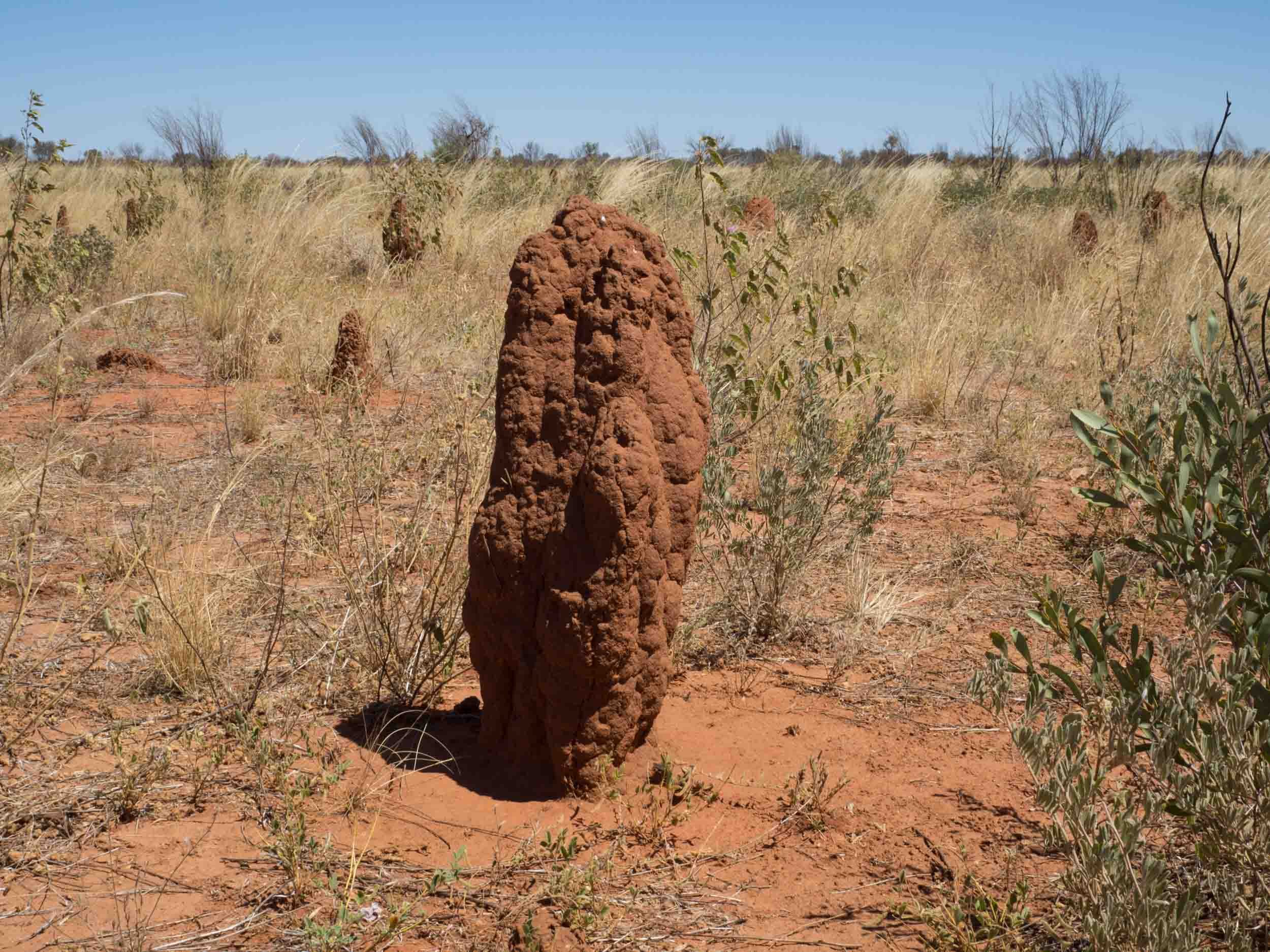

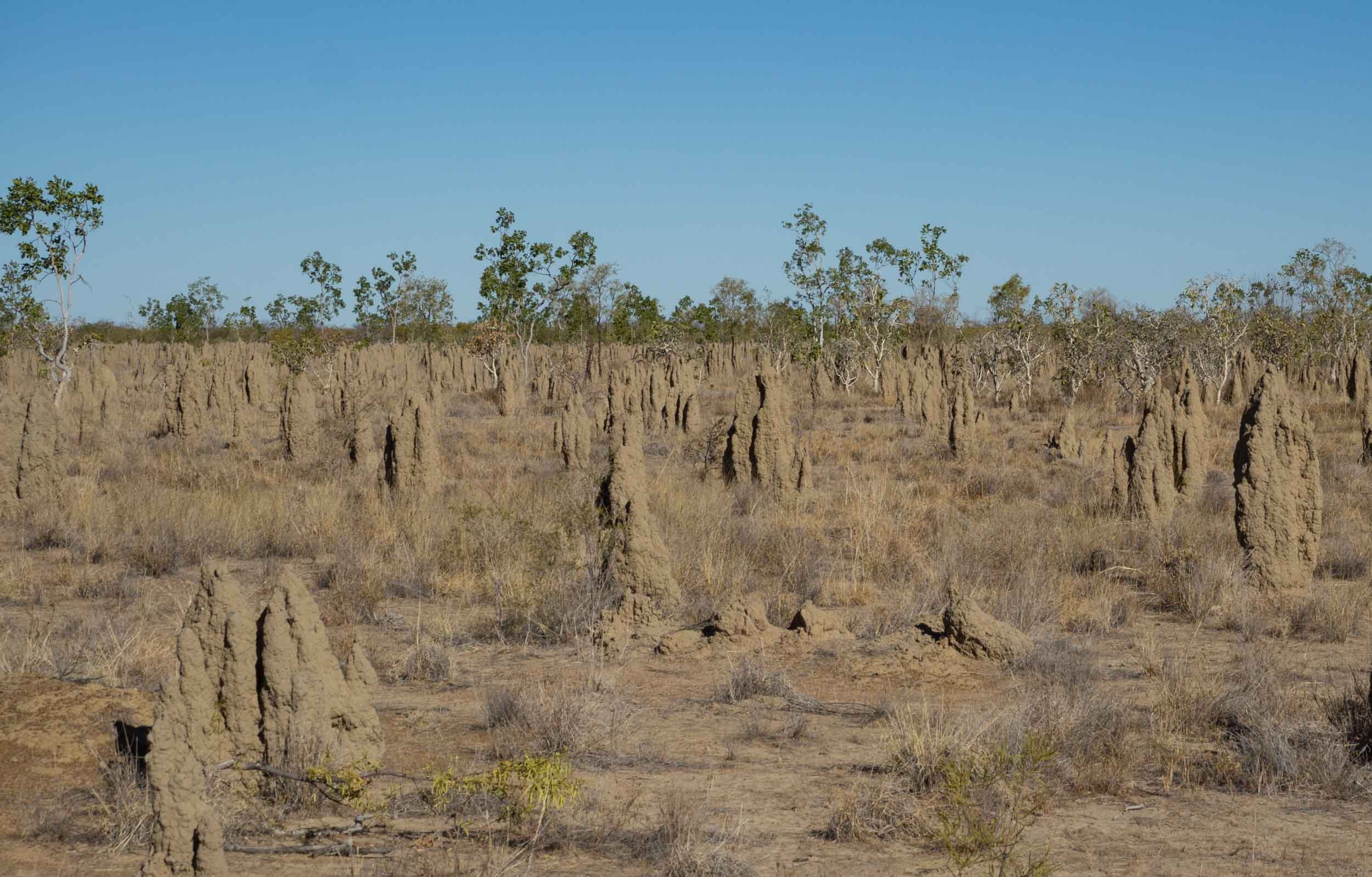






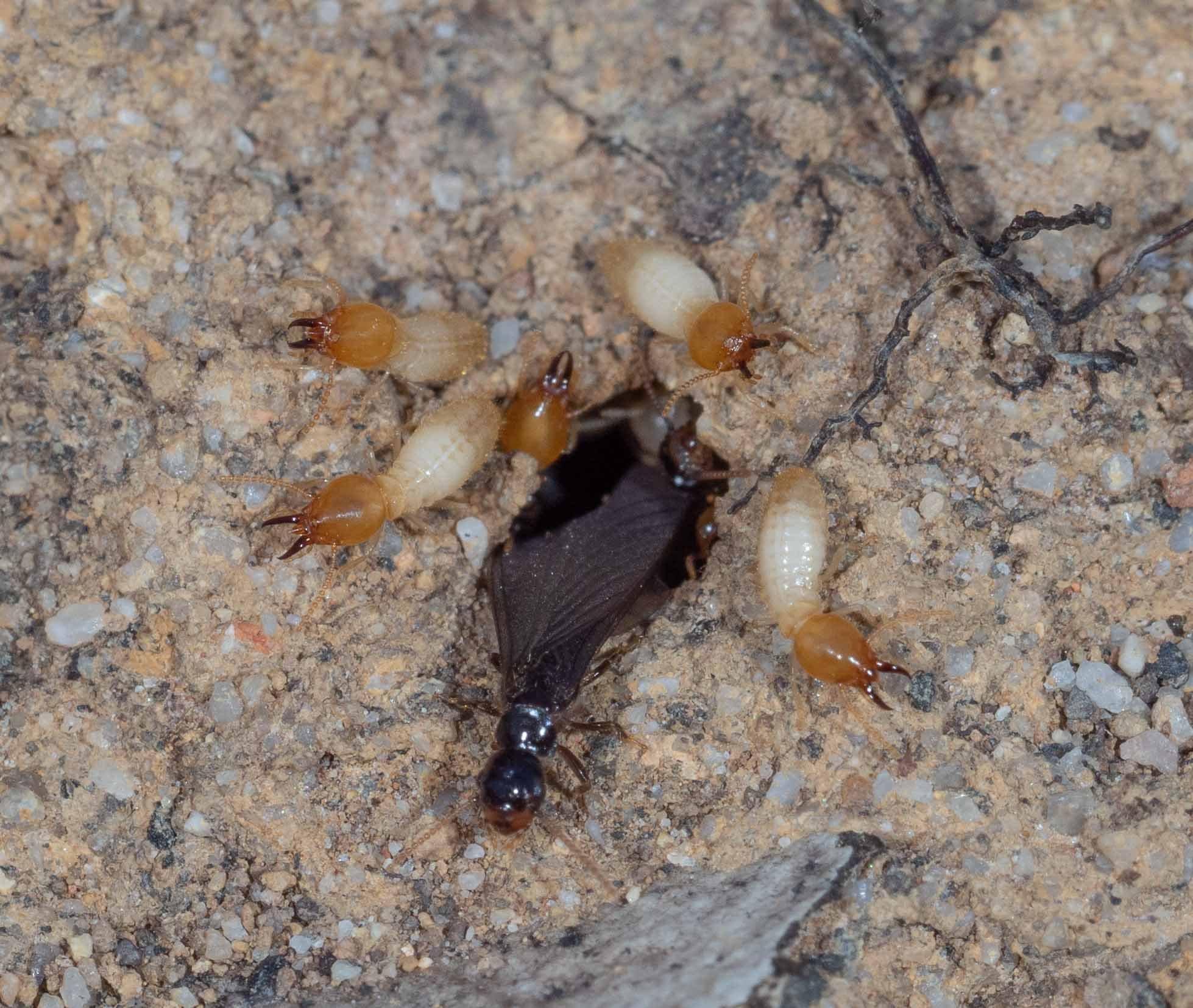
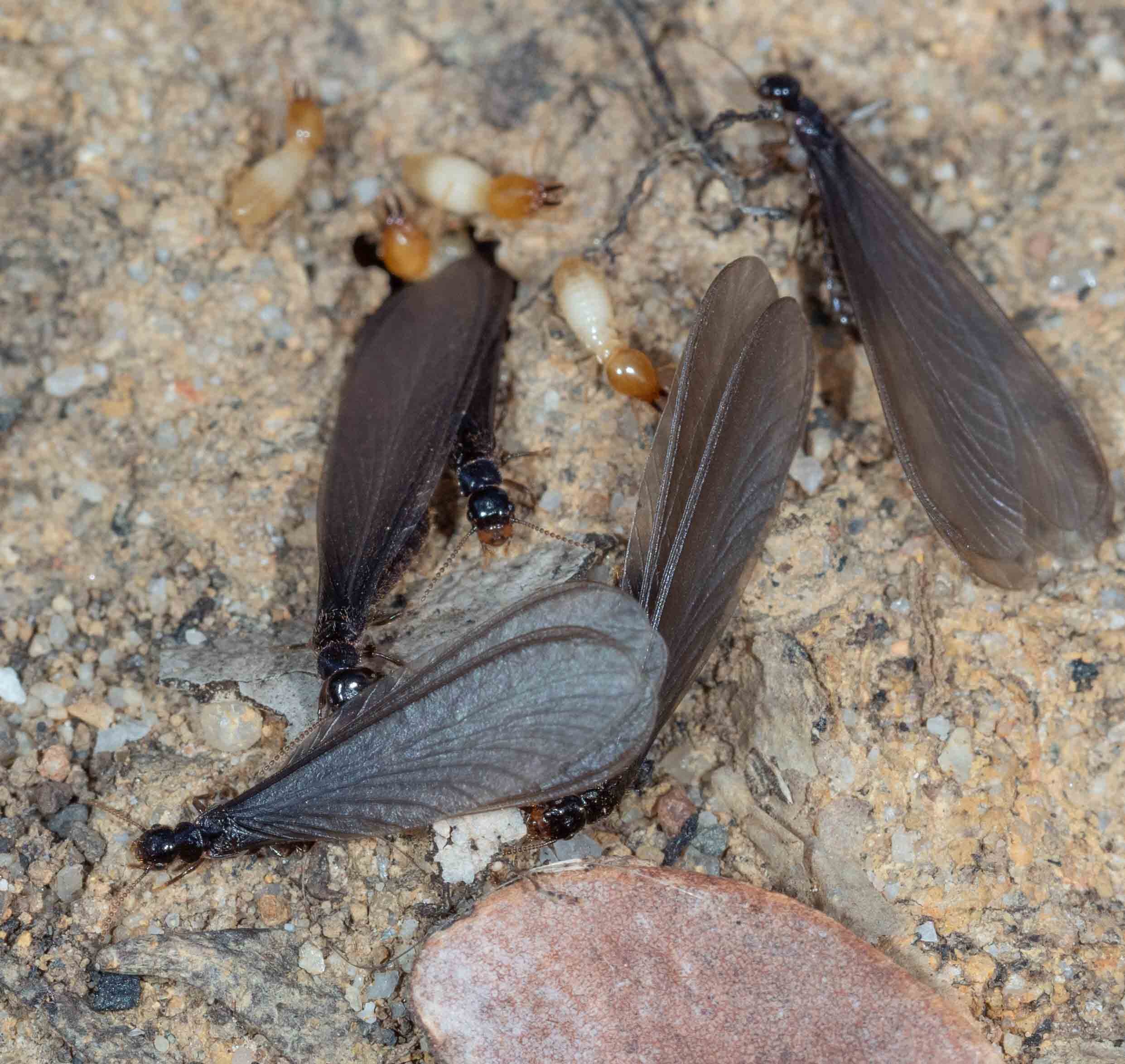
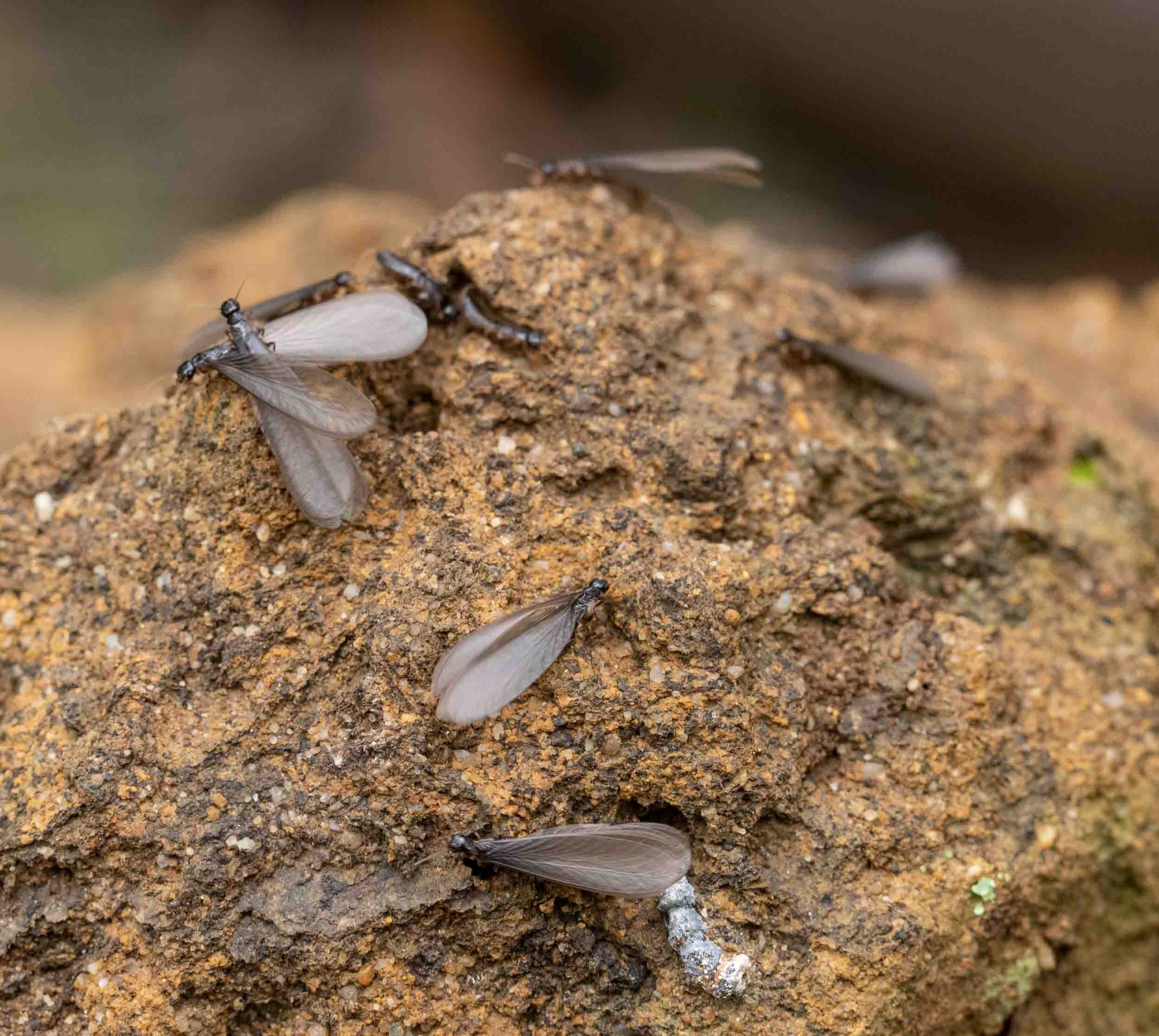
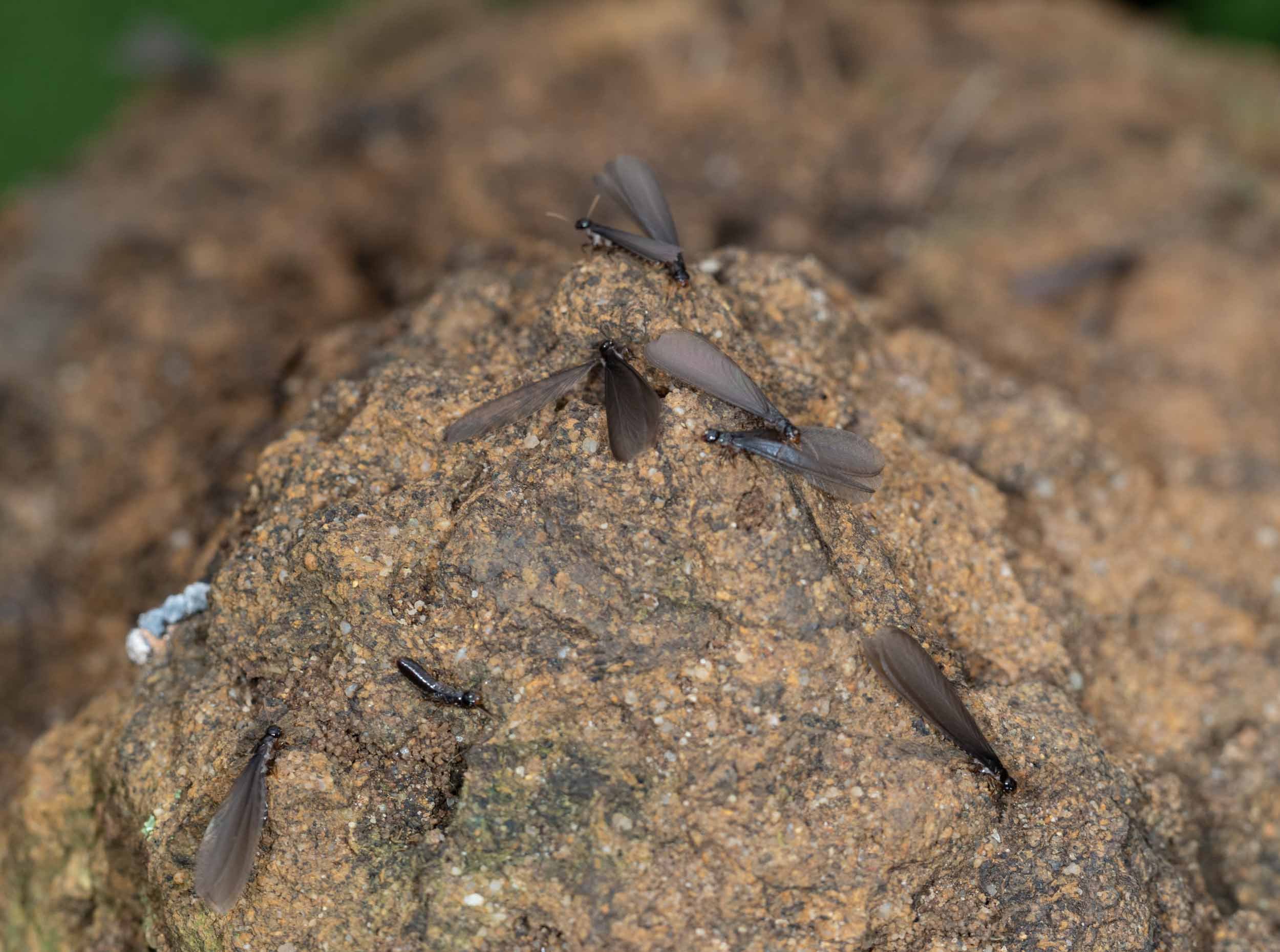
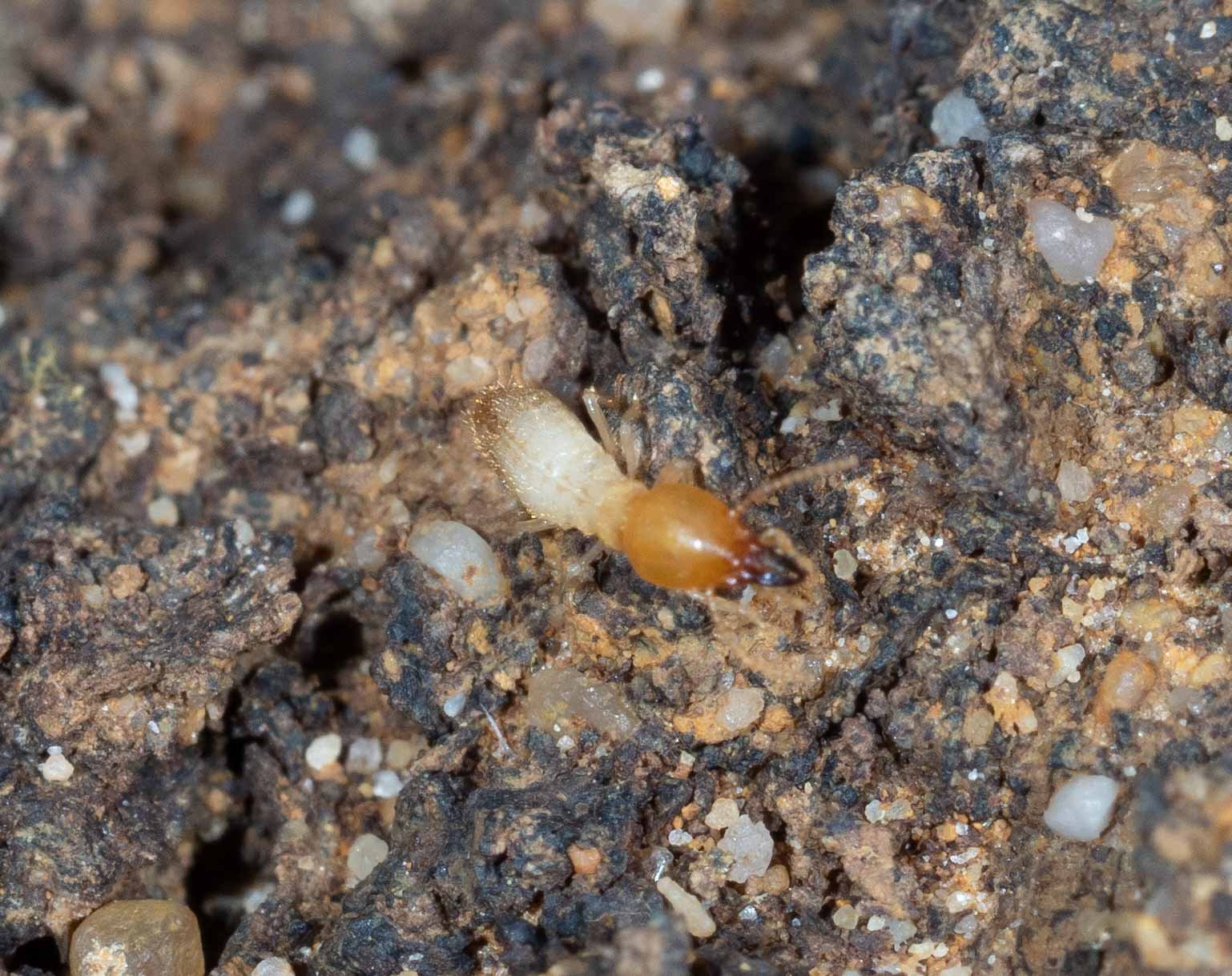







![dealate female - lateral view: tarsi whitish; head, thorax and abdomen densely clothed with long hairs; eyes moderately large (0.25 x 0.29 [0.25] - 0.33 x 0.36 [0.32]mm diam.), prominent; ocelli small (0.11 [0.10]mm diam.), well separated from eyes](https://images.squarespace-cdn.com/content/v1/58ec80a8d2b857fe42e4f603/1663631180039-1B88NGDY4RIE4RC5ZS64/P9170010-Edit-scale-2.jpg)
![dealate female - ventral view: length of body 5.25 - 7.00 [6.80] mm; width of head 1.06 - 1.30 [1.15] mm; sternites of abdomen mostly yellowish brown](https://images.squarespace-cdn.com/content/v1/58ec80a8d2b857fe42e4f603/1663629234674-7P9CD0SW667WPU38MBLM/P9100095-Edit.jpg)
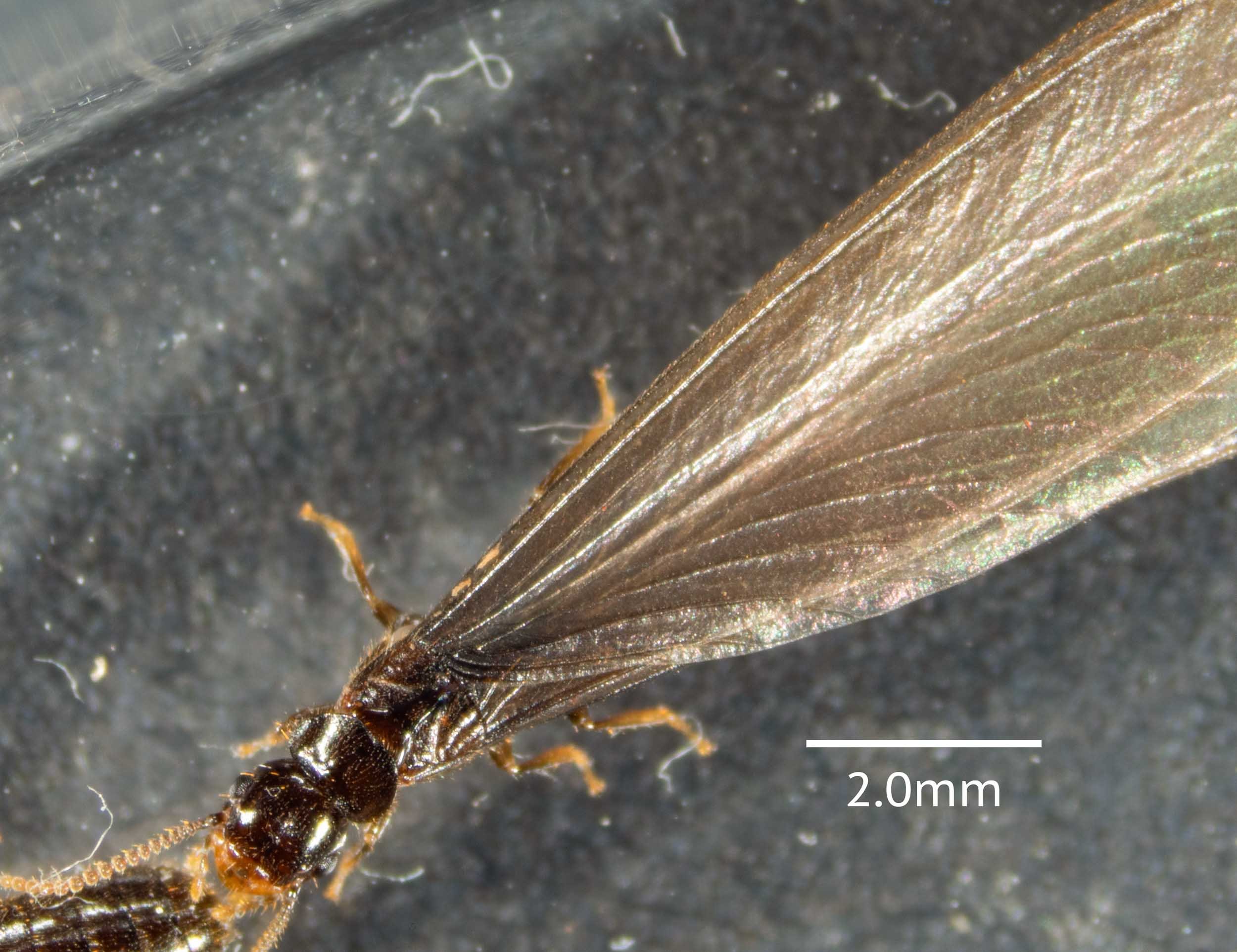
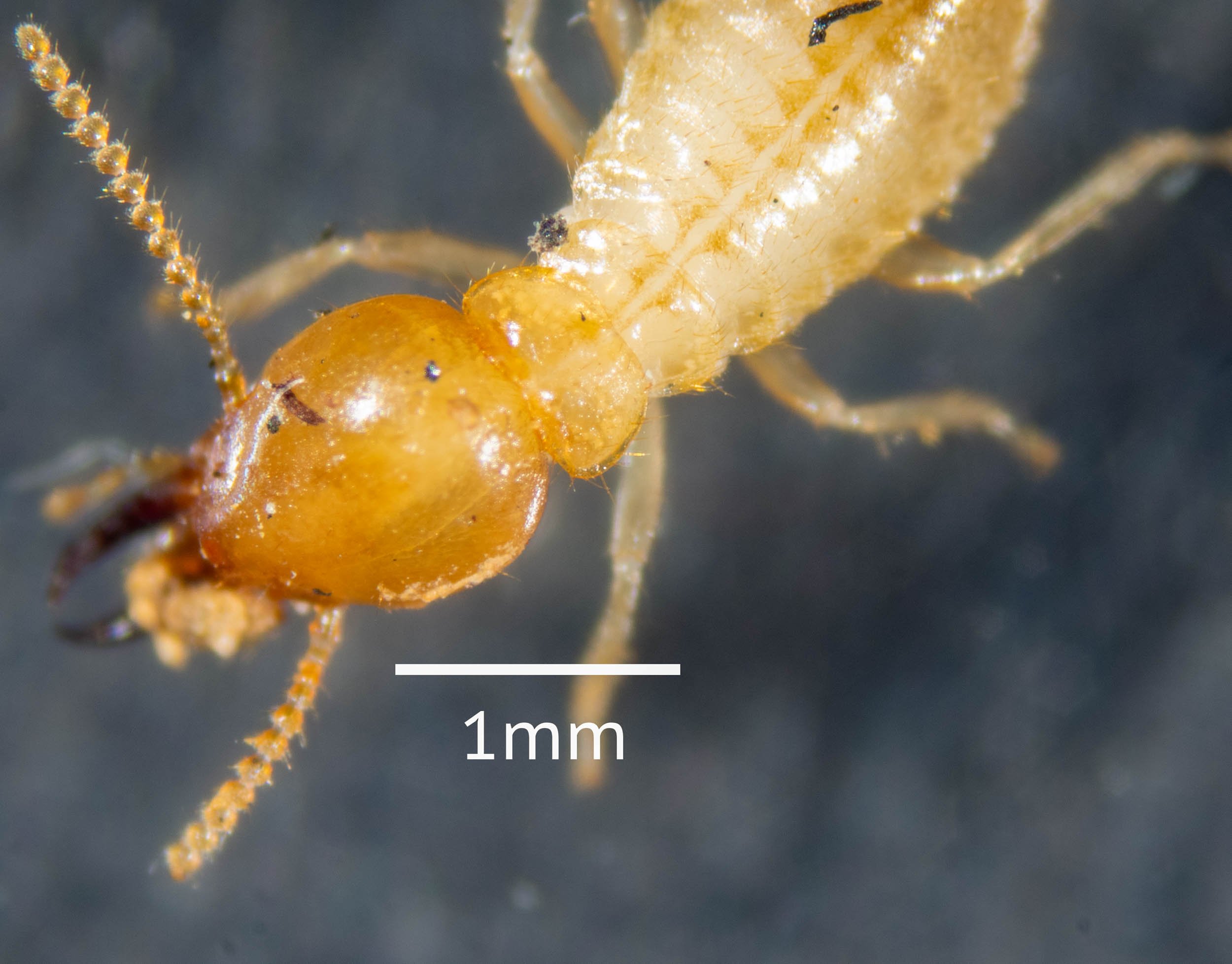
![soldier, ventral view: head length with mandibles 1.90-2.31 [2.00]mm](https://images.squarespace-cdn.com/content/v1/58ec80a8d2b857fe42e4f603/1663629189951-1GR5PU4SDU3HY27BS3PZ/P9100085-Edit.jpg)

